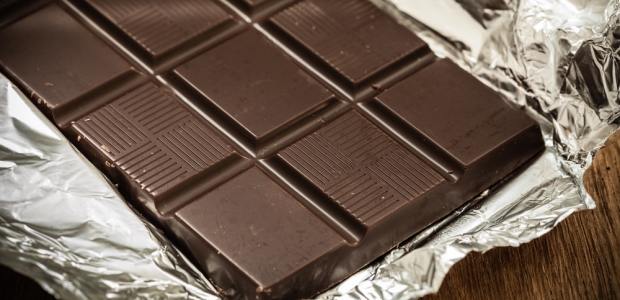
FDA: Many Dark Chocolate Products Contain Milk
Consumers who are allergic to milk should be aware that a high proportion of tested dark chocolates contained milk, the agency announced Feb. 11.
Valentine's Day shoppers beware: The U.S. Food and Drug Administration announced Feb. 11 that it recently tested 100 dark chocolate bars and found many of them contained milk. "More importantly, you can't always tell that's the case simply by reading the food label," the agency noted.
"This can be a problem, since even one small bite of a product containing milk can cause a dangerous reaction in some individuals," said researcher Binaifer Bedford, M.S., an Oak Ridge Institute for Science and Education fellow at FDA. The study found:
- While dark chocolates labeled "dairy free or allergen-free" were the least likely to contain milk, two out of 17 of these products were found to contain milk.
- All seven bars that declared the presence of milk on the label contained milk; however, 55 (59 percent) of 93 bars without any clear indication of the presence of milk also were found to contain milk.
- Six out of the 11 chocolate products labeled "traces of milk" contained milk at detectable levels high enough to potentially cause severe reactions in some individuals.
Milk is a major food allergen (there are seven others: wheat, eggs, peanuts, tree nuts, fish, crustacean shellfish, and soybeans). U.S. law requires foods containing a major food allergen to display its name on the label so consumers will understand what's in the food they're eating. Undeclared allergens, those not listed on the label, are a leading cause of FDA's food recall requests, and the agency's news release said from September 2009 to September 2012, about one-third of foods reported to FDA as serious health risks involved undeclared allergens. The food types most often involved in food allergen recalls were bakery products, snack foods, candy, dairy products, and dressings -- and in the candy category, there were many reports of undeclared milk in dark chocolate.
A manufacturer may not intend to use milk in a dark chocolate product but may inadvertently allow this by having dark chocolate and milk chocolate products share the same equipment, Bedford said. FDA conducted the testing after hearing from consumers who had eaten dark chocolate and experienced harmful reactions, FDA tested 100 dark chocolate bars for the presence of undeclared milk; the bars came from different regions of the United States, and each bar was unique in terms of product line and/or manufacturer.
"We divided the bars into categories based on the statements on the labels," Bedford said. The categories included precautionary statements such as "may contain milk" or "may contain traces of milk," statements such as "dairy-free" or "allergen-free," no mention of milk on the label, and inconsistent statements.